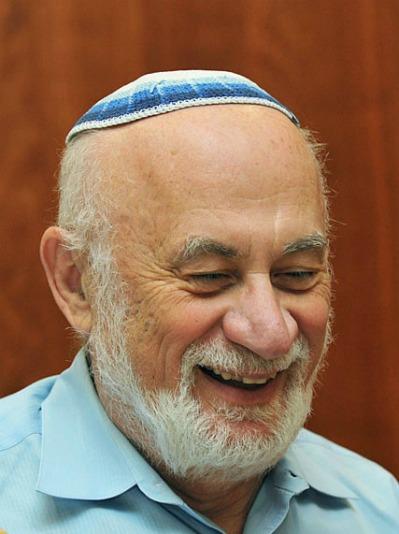
Imitating Boris Gulko, Part I
A few weeks ago I played my first and only tournament of 2012. I haven't played in a long time because tournaments take up too much of my time but because I thought the world might end, I made an exception 

"Bye Chess! According to the Mayan Prophecy we're all going to die in a few days so this'll be the last time I play you!"
To my complete and utter shock the world did not end  I was expecting meteor showers, volcanic eruptions, and widespread earthquakes. But I am really happy the world didn't end because the tournament reminded me of how fun chess can be. I definetely plan to play again in the future, maybe in 2014 or the next time the world is going to end.
I was expecting meteor showers, volcanic eruptions, and widespread earthquakes. But I am really happy the world didn't end because the tournament reminded me of how fun chess can be. I definetely plan to play again in the future, maybe in 2014 or the next time the world is going to end.
The first game I played in the tournament was against Grand Master Omar Almeida (ELO Rating: 2522) and while most times I would've complained about getting that kind of opponent in the first round, this time I was thankful. "If the world ends next week, I might as well play against a Grand Master  "
"

Even though it was my first game of the entire year and I was playing an opponent who outrated me by 200+ points I was NOT at a disadvantage. Why not?
- I was wearing my black Chess.com hat. Whenever I put it on, my rating goes up at least 100 points
 Next time, I'll wear some sunglasses, too.
Next time, I'll wear some sunglasses, too. - In the weeks leading up to the tournament I was studying Gulko's "Lessons with a Grandmaster" with my students and constantly reviewing the major themes therin.
- I was playing White.
- I figured the world was going to end so I played this game as if it were my last game against a Grand Master.
Even though Omar Almeida was (and is) a stronger player generally speaking, I also had some things going for me that evened up the encounter.
Let us look at the game in question.
No. Nevermind. Let us look at the first game Gulko analyzes in his book "Lessons with a Grandmaster".
No. Nevermind. Let us look into the first note in the book. Sorry about jumping around but this is important. And by important I mean extremely important! You'll understand once everything is said and done.
Our story begins in 1979. Efim Geller was white against K. Lerner. The game was played in the USSR Championships. In Gulko's book the game is given in its entirety without notes. I therefore present it in the same way. We'll observe the mechanisms at play once we get to Gulko's game against Radjabov. Look at the game from beginning to end. Just look at it.
How did Geller win exactly? It's a complicated question. When I first looked at it, I didn't think much. I just thought, "Geller maneuvered his pieces around and let his weaker opponent go astray." Do you know how Geller won? Probably not. That's OK because Gulko is going to show us.
Over 20 years later, Gulko playing white against Radjabov arrived at this position.
What is your evaluation of this position?
If you don't know, that's OK. GM Gulko and Dr. Sneed break this position down very well. The evaluation is that White is better because he has an advantage in time. Black will have to spend at least two tempi to get the King to a better square and a Rook into the game whereas White can do it in one move with O-O-O.
But that's only a part of White's potential advantage. In the following positions, White does NOT--I repeat, NOT--have a major advantage even though some things are similar. Look at them first and then towards the end of the article I'll explain why they aren't like Gulko's position against Radjabov.
So the million dollar question is, "Why does Gulko have more of chance of realizing his temporary time advantage than in these other positions?"
Gulko answers this question in the book by testing us on his next move.
What is White's move? (Hint: This is the reason the Geller game was given at the beginning!)
That's right, the panaroma changes with this deceptivly powerful move. This move encompasses Gulko's first piece of advice when trying to make something of a time advantage (which is naturally temporary): Create an object of attack!
That's it. That piece of advice is worth at least 20 Euros. At least. Let us try to understand what that golden nugget of information really means. If you can't create an object of attack then you won't be able to convert your time advantage into something tangible. Your time advantage is simply going to disappear and you'll have nothing to show for it. That's why this position is not better for White:
White's not going to be able to create an object of attack if Black plays well. The evaluation is equal.
This one is a bit trickier:
Here, it's too early to give a definitive evaluation. The course of the game will depend on whether or not White can create an object of attack. If White creates an object of attack then he'll be on his way to securing an advantage. If he doesn't, then Black will get a comfortable game. The process can be described in a few words quite easily but, in reality, creating an object of attack is a bloody battle that will decide who lives and dies.
So if you have a time advantage, look for ways of creating an object of attack! Try to create one! Sometimes it'll be hard but in Gulko - Radjabov it was easy for GM Gulko to find it. Why? Gulko explains, "b3 is a hard move to find but for me it was easy because I had seen the Geller game." And that's why studying classic games is important; you can see how strong players identify and create objects of attack. And that's also why it's important to analyze your own games: you need to see if you identified the correct object(s) of attack in your games.

An object of attack is necessary for a time advantage to bloom into something. Until next time, my friends 

